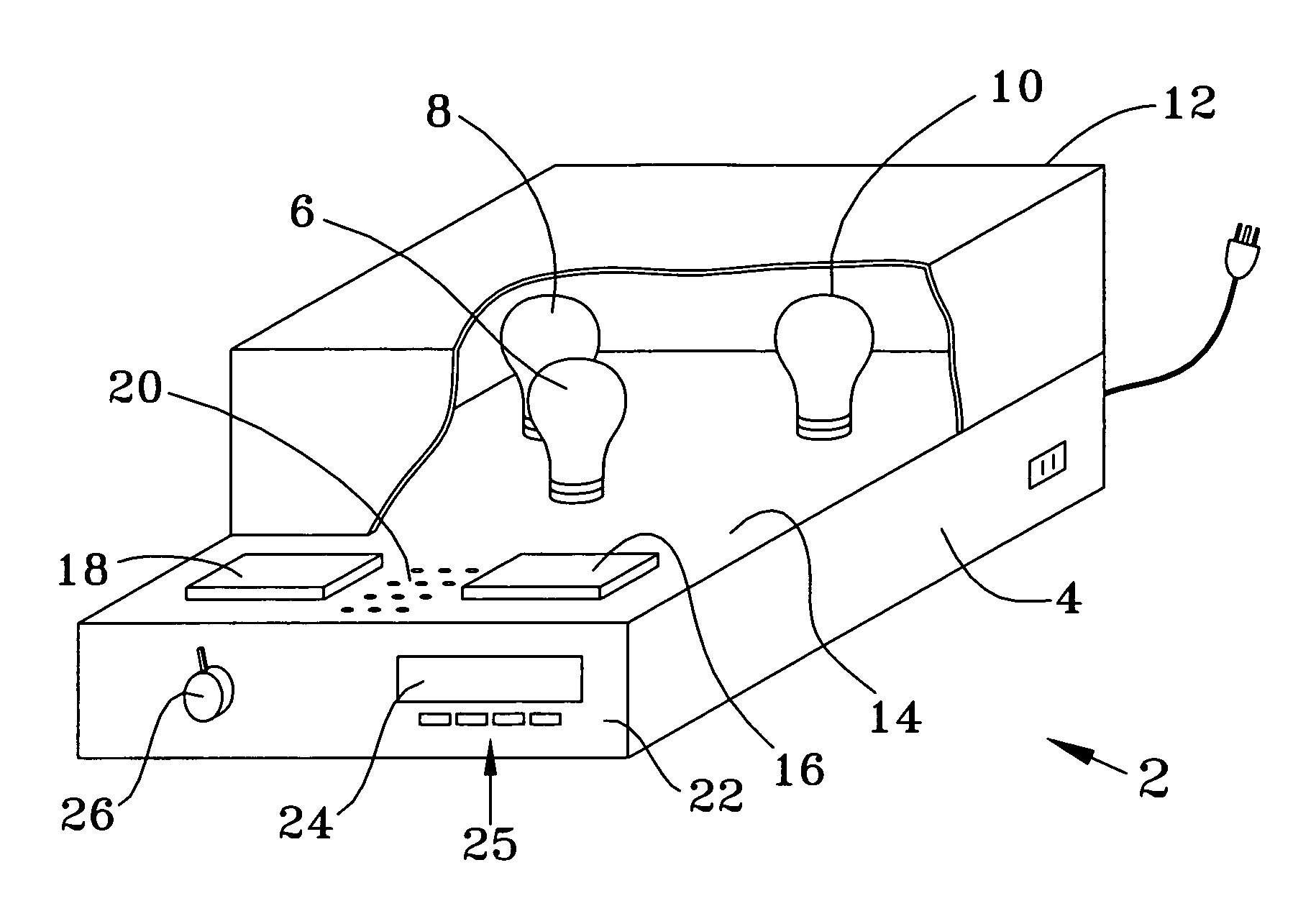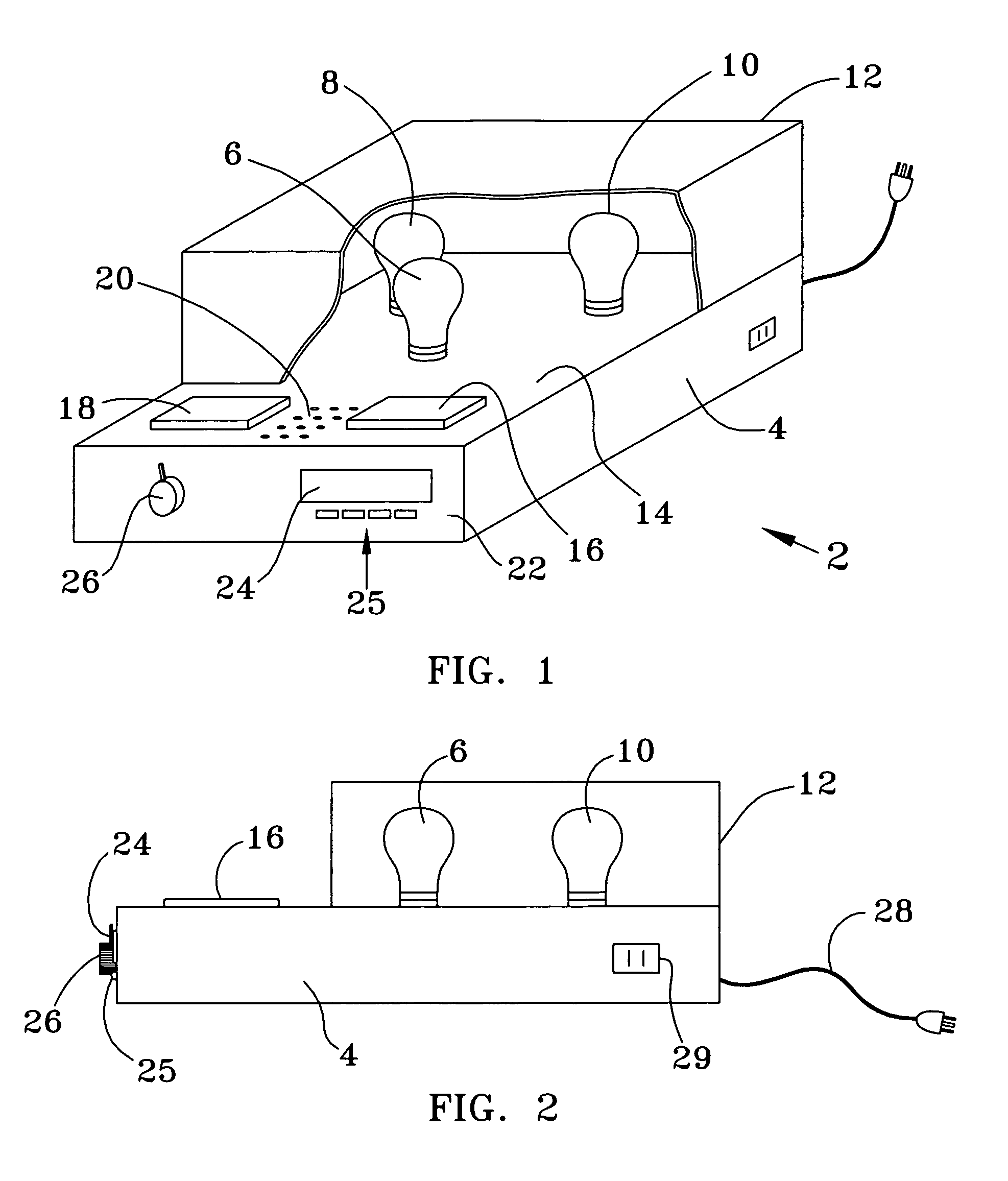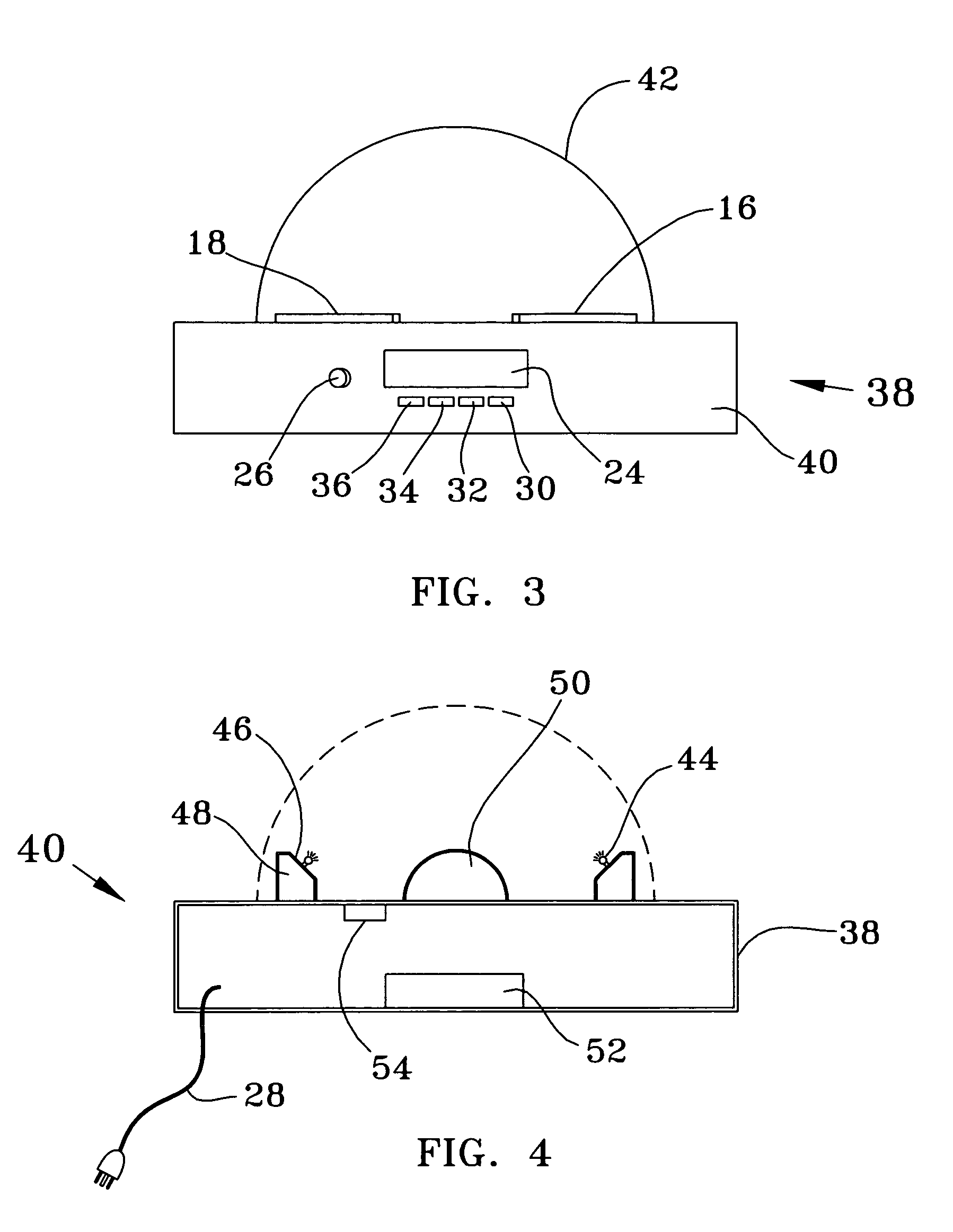Sunlight simulating microprocessor alarm clock
- Summary
- Abstract
- Description
- Claims
- Application Information
AI Technical Summary
Benefits of technology
Problems solved by technology
Method used
Image
Examples
embodiment 2
[0028]In the preferred embodiment 2, the blue, red and white light bulb wattages are respectively 20, 40 and 60 watts, and the timed intervals between the sequencing of the lights are 15 minutes each. The color sequencing simulates, to an extent, the changing colors and intensity of the rising sun.
[0029]When a sleep time has been set and the sleep mode selected, at a discrete timed interval prior to the wake time, white light 10 turns on. After a timed interval, red light 8 turns on and white light 10 turns off, and after a second timed interval blue light 6 turns on and red light 8 turns off. After a third timed interval, blue light 6 turns off. The operation of the sleep mode follows the reverse sequencing of the wake mode. It is used to lull children to sleep at night. The color sequencing simulates to an extent the changing colors of the setting sun. The timing intervals are the same as used in the wake mode.
[0030]In the wake and sleep mode, the alarm clock 2 functions twice a d...
second embodiment
[0039]The second embodiment alarm clock 52 utilizes more LEDS 44 and the LEDS are of a lower power than the LEDS 44 used in the first alternate embodiment. The LEDS 44 are directly mounted to the to the base top surface 54. With the lower power LEDS (reduced light intensity) and the increased number of LEDS, mixing of the light is not a problem, however power consumption rises.
[0040]Although not shown, a high illumination version of this second alternate embodiment is possible by increasing the number of LEDS 44 mounted on the base top surface 54 and or by utilizing superbright LEDS.
[0041]With the use of this invention as shown and described above, it may be possible to optimize the light spectrum as a melatonin suppression or production countermeasure for sleep and circadian disturbances at the waking or sleeping periods.
PUM
 Login to View More
Login to View More Abstract
Description
Claims
Application Information
 Login to View More
Login to View More - R&D
- Intellectual Property
- Life Sciences
- Materials
- Tech Scout
- Unparalleled Data Quality
- Higher Quality Content
- 60% Fewer Hallucinations
Browse by: Latest US Patents, China's latest patents, Technical Efficacy Thesaurus, Application Domain, Technology Topic, Popular Technical Reports.
© 2025 PatSnap. All rights reserved.Legal|Privacy policy|Modern Slavery Act Transparency Statement|Sitemap|About US| Contact US: help@patsnap.com



